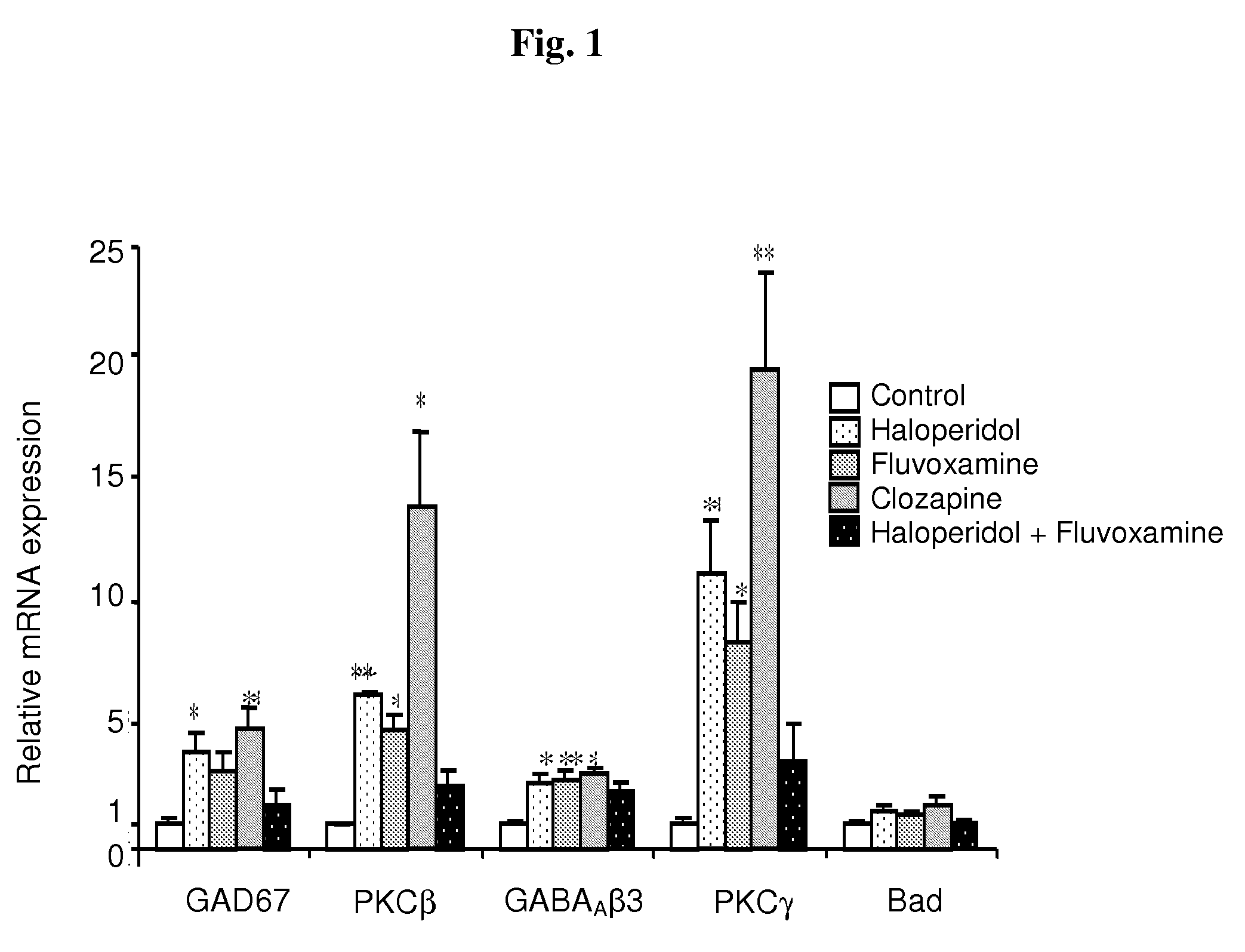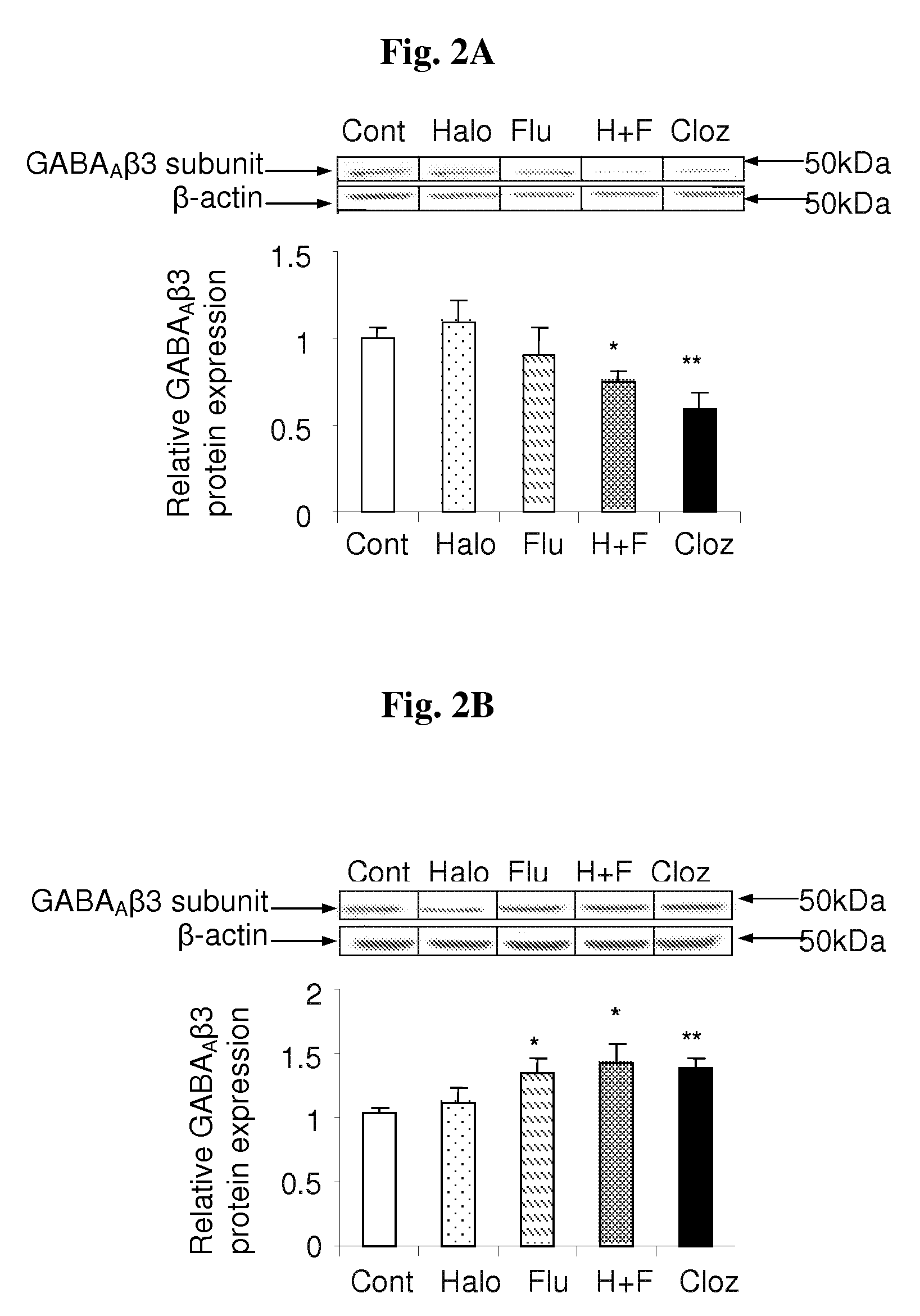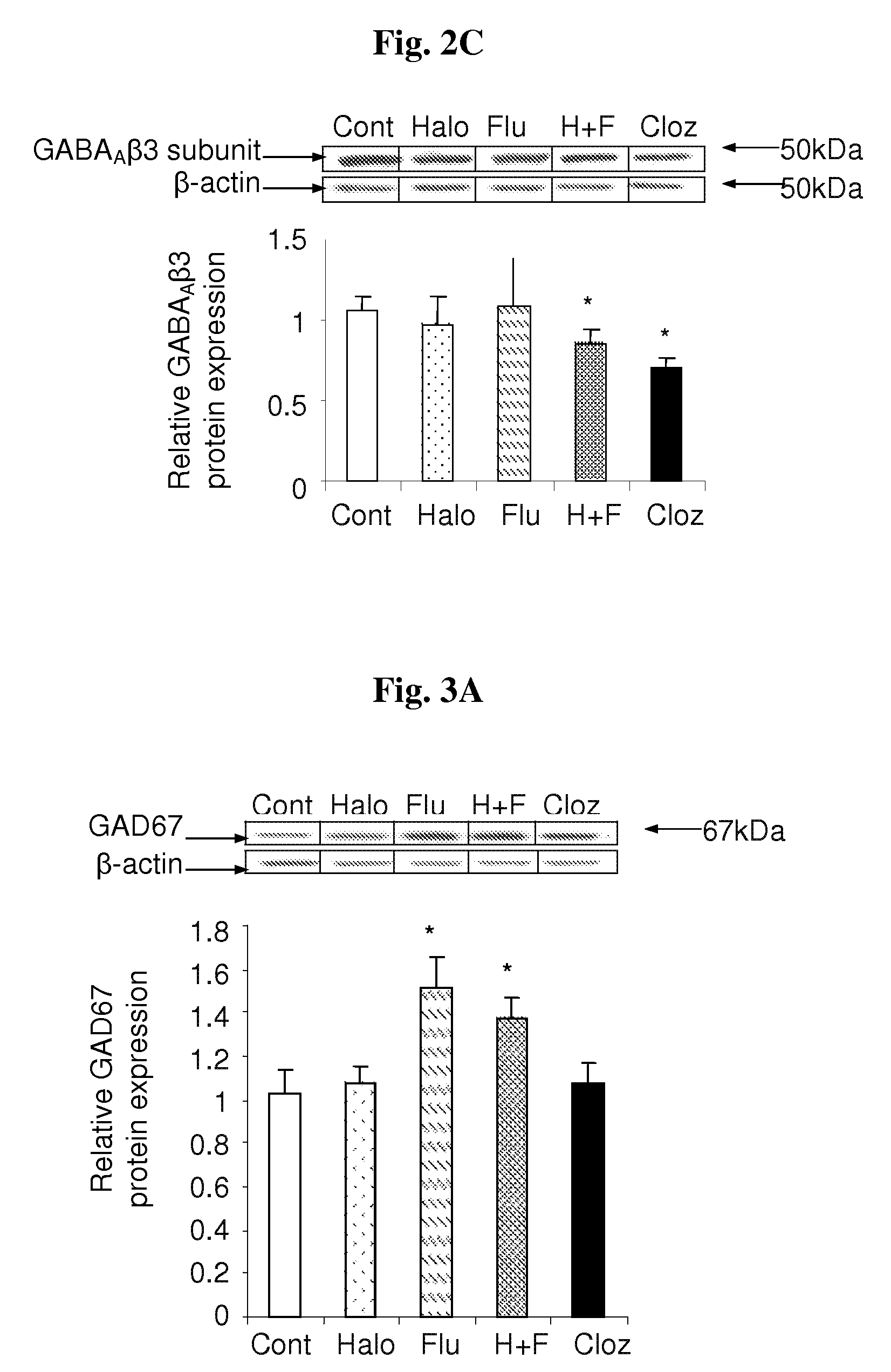Method for identifying antipsychotic drug candidates
a drug candidate and antipsychotic technology, applied in the field of antipsychotic drug candidates, can solve the problems of limited effect, ineffectiveness of dopamine antagonists, and limited development of better treatments for schizophrenia and other psychiatric diseases,
- Summary
- Abstract
- Description
- Claims
- Application Information
AI Technical Summary
Problems solved by technology
Method used
Image
Examples
example 1
Haloperidol, Fluvoxamine and Clozapine Alter GABAAβ3, PKCβ, PKCγ and Bad mRNA Levels in Frontal Cortices of Rats
[0111]In this experiment we examined the molecular alterations in frontal cortices of rats chronically-treated with the haloperidol-fluvoxamine combination vs. each one of these drugs or clozapine. In particular, male Sprague-Dawley rats were treated for 14 days by daily intraperitoneal (IP) injections of haloperidol, fluvoxamine, the haloperidol-fluvoxamine combination, clozapine or vehicle, as described in Materials and Methods. cDNA array was used to generate a list of candidate genes that may play a role in the mechanism of action of antipsychotic treatment, in particular, of the haloperidol-fluvoxamine combination.
[0112]From the list of genes altered (data not shown), eight were chosen for further verification by real-time RT-PCR and for examination of the corresponding expression at the protein level. These genes included cyclin D3, encoding for a regulator of cell p...
example 2
The Haloperidol-Fluvoxamine Combination and Clozapine Decrease GABAAβ3 Protein Level and Induce Receptor Endocytosis in Frontal Cortices of Rats
[0114]Previous studies demonstrated that the expression levels of various proteins associated with the GABA system in the frontal cortex are affected by chronic treatment with the drugs of interest. Thus, in this experiment we examined the expression level of GABAAβ3 receptor subunit in the frontal cortices of rats chronically-treated with haloperidol, fluvoxamine, the haloperidol-fluvoxamine combination or clozapine. Protein samples from individual frontal cortices were subjected to subcellular fractionation and consequent Western blot analysis using primary antibodies against GABAAβ3. Immunoreactive bands were analyzed by densitometry and normalized against β-actin levels.
[0115]As shown in FIGS. 2A-2C, both the haloperidol-fluvoxamine combination and clozapine significantly decreased relative GABAAβ3 receptor subunit expression level in ra...
example 3
The Effect of Haloperidol, Fluvoxamine, the Haloperidol-Fluvoxamine Combination and Clozapine on GAD67, PKCβ2 and ERK1 / 2 Protein Levels in Frontal Cortices of Rats
[0116]In this experiment we examined the expression levels of (i) GAD67, the key enzyme in GABA synthesis; (ii) PKCβ2, a PKC isoform that regulates GABAAβ3 subunit phosphorylation; and (iii) both ERK1 (p44-MAPK) and ERK2 (p42-MAPK), previously shown to affect GABAA receptor activity, in the frontal cortices of rats chronically-treated with haloperidol, fluvoxamine, the haloperidol-fluvoxamine combination or clozapine. Whole tissue lysates from individual frontal cortices were subjected to Western blot analysis using primary antibodies. Immunoreactive bands were analyzed by densitometry and normalized against β-actinlevels.
[0117]FIG. 3A shows that both fluvoxamine and the haloperidol-fluvoxamine combination increased the relative GAD67 expression level in rat frontal cortices. It is concluded that this effect is due to the ...
PUM
 Login to View More
Login to View More Abstract
Description
Claims
Application Information
 Login to View More
Login to View More - R&D
- Intellectual Property
- Life Sciences
- Materials
- Tech Scout
- Unparalleled Data Quality
- Higher Quality Content
- 60% Fewer Hallucinations
Browse by: Latest US Patents, China's latest patents, Technical Efficacy Thesaurus, Application Domain, Technology Topic, Popular Technical Reports.
© 2025 PatSnap. All rights reserved.Legal|Privacy policy|Modern Slavery Act Transparency Statement|Sitemap|About US| Contact US: help@patsnap.com



